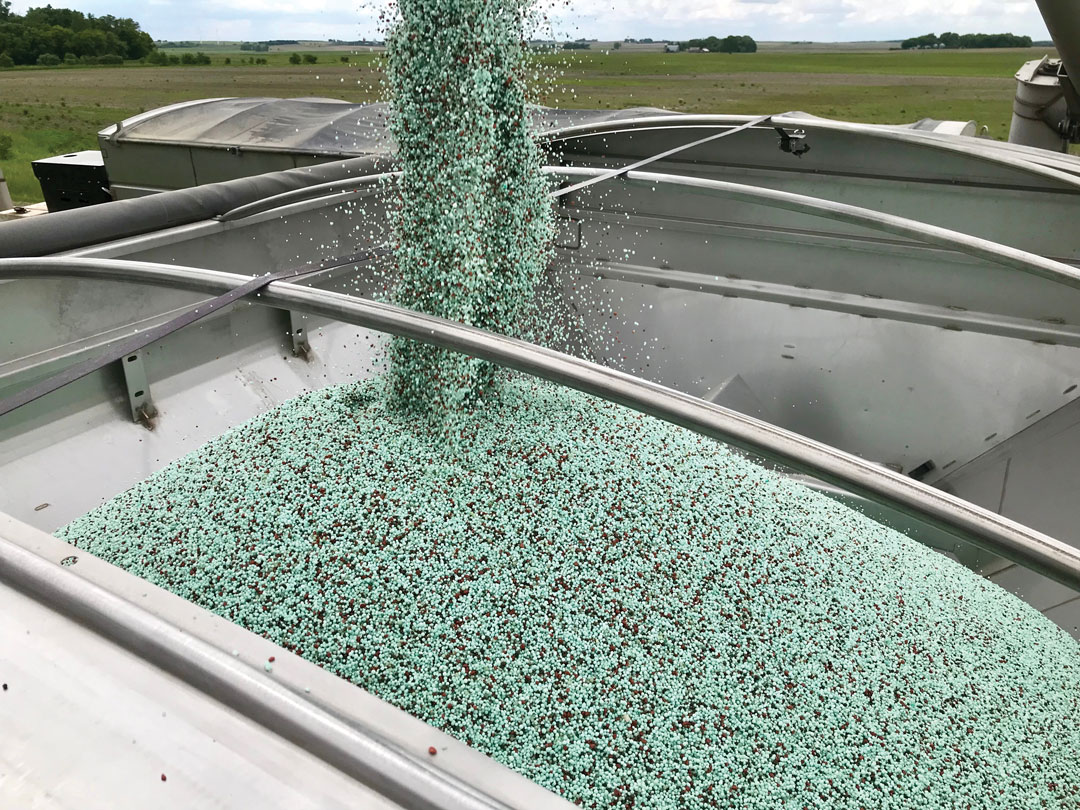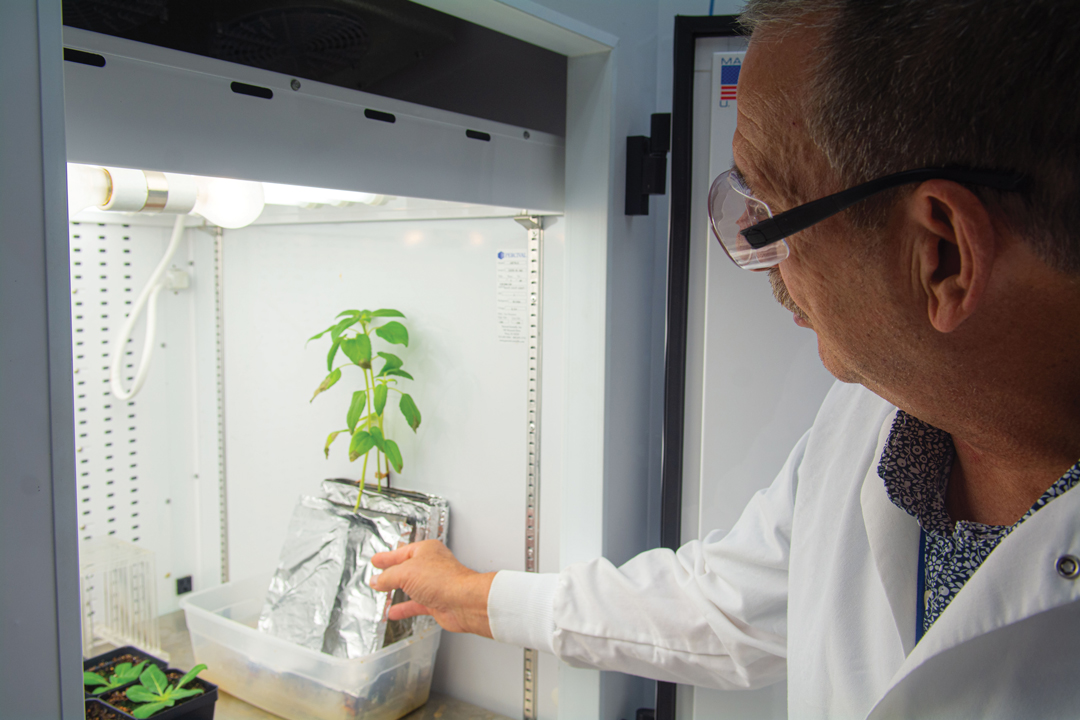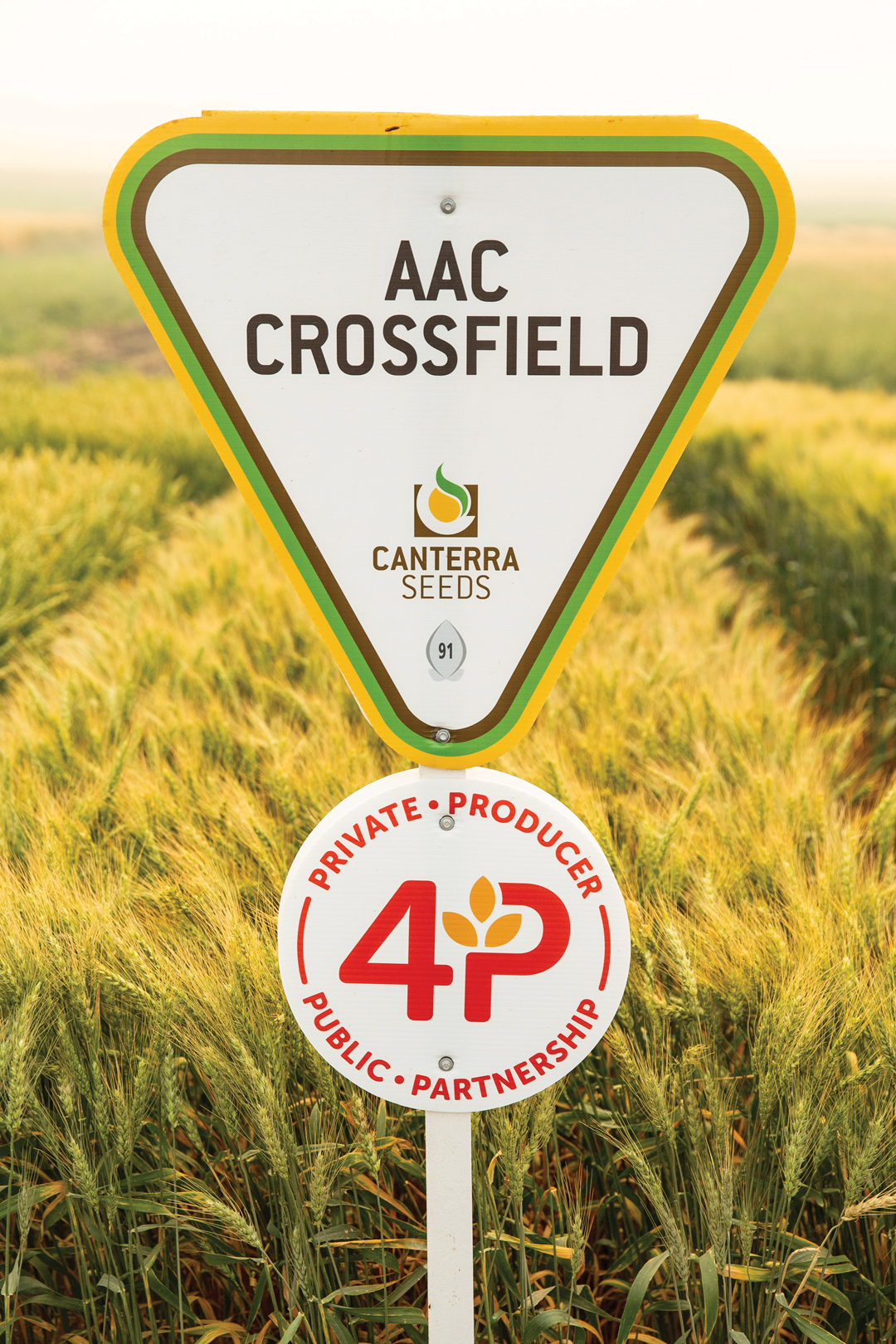KEEP’N YOUR OPTIONS OPEN
BY TREVOR BACQUE
When fertilizer prices hit all-time highs and availability became a serious concern this past growing season, it naturally forced farmers to question whether they apply their primary input as efficiently as possible.
If not, how can they gain an edge or be more precise with its application? One way is to consider the use of nitrogen stabilizers. Depending on field conditions, urease inhibitors, nitrification inhibitors and slow-release fertilizers may be of use to a farmer.
Dean Hubbard, Alberta Wheat Commission region 1 director, farms southeast of Claresholm in southern Alberta and primarily grows wheat, canola, flax and yellow peas. His farm was “dry as a bone” last year and received half his normal eight inches of annual rainfall. As a result, most of his nitrogen did not mineralize and he only purchased 30 per cent of what he normally does for 2022. Last year, he tried ESN, a slow-release fertilizer, on his canola acres. He also put down Agrotain, a urease inhibitor, as well as a phosphorus product. Although the nitrogen products did not give the returns he expected, Hubbard is open to trying them again.
“If we can get a fall where we can plant winter wheat, I would still use an inhibitor on 75 per cent of the nitrogen we put down in the fall,” he said. “The cost of the nitrogen is so high you don’t want to lose any of it. You better protect it. Agrotain will cost a little more, but you can’t afford to lose it to the atmosphere.”
Brian Beres has researched such products for more than a decade in Lethbridge where he is a federal research scientist. His trials demonstrated nitrification inhibitors are particularly useful to reduce greenhouse gas emissions and protect yields, if not also offering a boost.
“If we are going to make a blanket policy on reductions, hopefully down the road we can have a subsidy or rebate on that product if we decide collectively your nitrification inhibitors particularly are doing something that is very much environmentally friendly,” he said.
These products are not solely designed for environments with high mineralization rates. Beres notes there’s an opportunity to lose nitrogen in every site, particularly when you have high productivity zones.
“It all boils down to understanding your yield potential and your nitrogen demands within that system, and how much potential leakage there is because of that,” he said.
Rigas Karamanos is an agronomy research scientist with more than 45 years of experience in Western Canada, and works for the Alberta Wheat and Barley Commissions. He believes “there is a place for them” but always asks why would you use it?
He explained these products are best used in a broadcasting setting, especially fall broadcasting, as well as shallow banding less than 2.5 inches. “When you broadcast fertilizer now there is a place for these stabilizers and enhanced efficiency products,” he said. “You have to assess what the situation is. If your primary concern is a volatilization loss and you get an inch of rain after you apply fertilizer, it doesn’t make sense to use any inhibitor because there’s not going to be much volatilization, if any.”
However, if your plan is to deep band in the fall, save yourself time, effort and money, he warns. “If you deep band the fertilizer, you’re not going to see a benefit from a yield perspective. There’s no point to use these products.”
Karamanos encourages farmers to study the weather above all, and suggests if a farmer lived in the Red River Valley, they should use it every year, but southern Alberta is a completely different story. “It can be a very pricy thing, given the conditions,” he said.







Comments